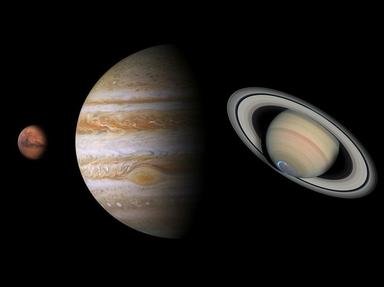Quiz Answer Key and Fun Facts
1. First dwarf planet discovered to have a ring system
2. Was classified as a proper planet for 76 years
3. Closest dwarf planet to the sun
4. Named after the creator god of the Rapa Nui people
5. Smallest of the dwarf planets
6. The most massive dwarf planet
7. Named after the Hawaiian goddess of childbirth
8. Largest of the dwarf planets (by volume)
9. Most recently discovered dwarf planet (of these five)
10. Furthest dwarf planet from the sun
Source: Author
reedy
This quiz was reviewed by FunTrivia editor
rossian before going online.
Any errors found in FunTrivia content are routinely corrected through our feedback system.

